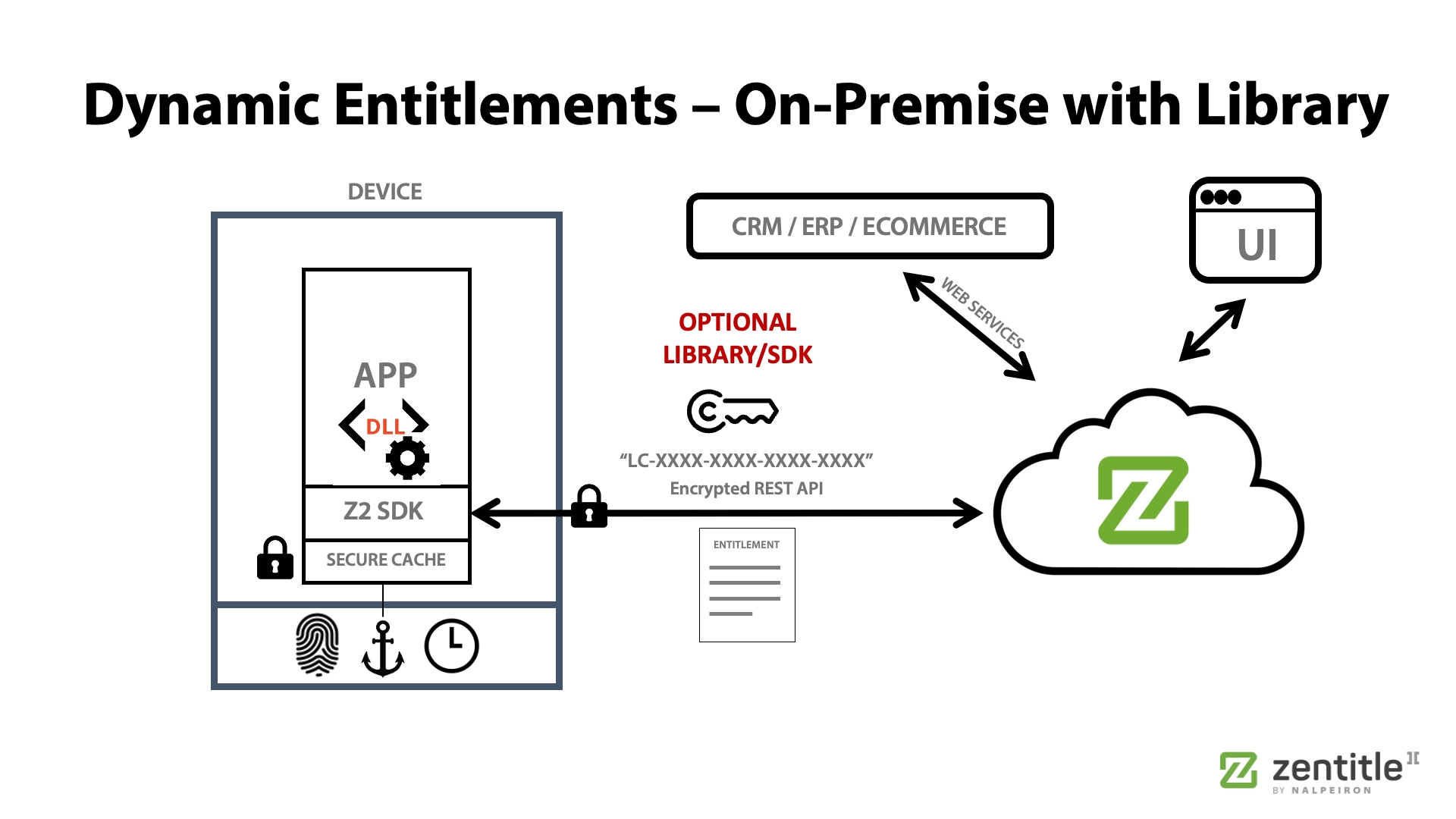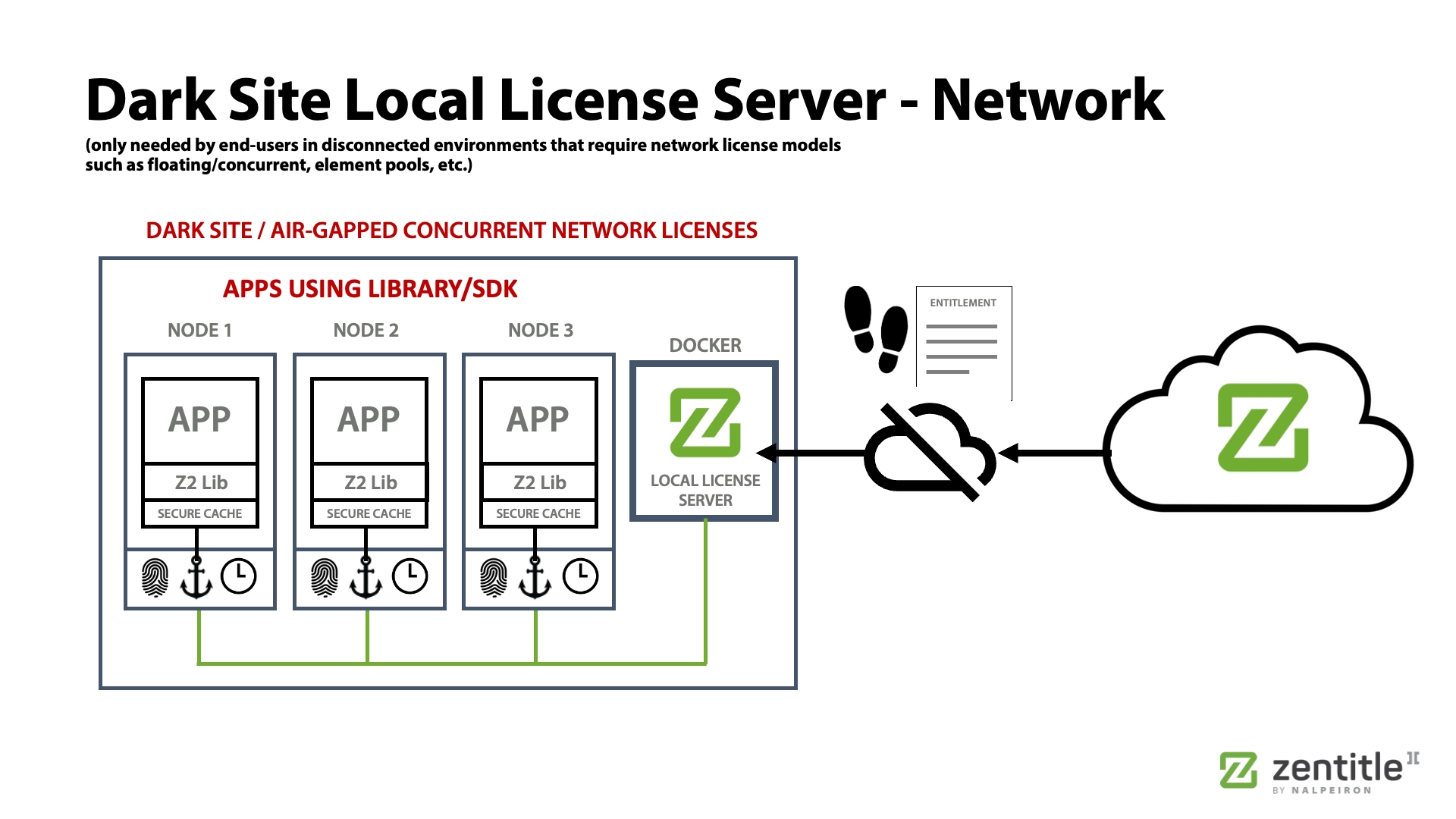SaaS vs. On-premise deployments
SaaS-based entitlement management, on-premises licensing, hardware-based licensing, or a hybrid is possible with Zentitle2.
Discussion of the differences
Two licensing model types are widely used in software: SaaS (Software as a Service) and On-Premise. These two models represent fundamentally different approaches to accessing, using, and managing software, and each has its unique set of considerations concerning licensing and monetization.
The SaaS model is a modern approach to software delivery. Under this model, users use the software via the Internet, often on a subscription or usage basis. The software is hosted on the provider's servers, and users can access it using a web browser. The key advantage of this model is that it eliminates the need for organizations to install and run applications on their systems.
On the other hand, the on-premises licensing model is more traditional. A perpetual or subscription model often requires the purchase of a license for each piece of software. The software is then installed on the company's servers and each user's system in the case of a B2C desktop application. Once installed, it can be offered as part of a floating pool of licenses where the applications are shared or on an individual-use basis. Installing on both servers and desktops means deploying the licensing code embedded into the application, which alone requires more time, testing, and consideration of security issues.
In conclusion, both the SaaS and On-Premise models have their advantages and trade-offs, and from a software licensing standpoint, a different approach from engineering and product teams.
From a software licensing and monetization standpoint
The SaaS application deployment model differs from on-premise as the security requirements differ significantly. SaaS deployments tend to be driven by connectivity to various systems and often to identity as the means of authentication and connection with the end user. They mostly consume API calls and don't require as much testing or engineering to roll out.
SaaS deployments still get all the benefits of Zentitle2 in creating an “abstraction layer” that frees the engineering, product, and other teams to be more agile, price, and package easily and go to market faster. These deployments may be easier, but they can also go to market in sophisticated ways with business models that allow a mix of subscription, usage, and other modern models easily and quickly.

On-premise deployments tend to be far more varied and complex, often requiring deployment into dark (offline) sites, with pools of concurrent network seats and millions of user desktops in the B2C model. In each case, there's more security, often the need for SDKs and specific OS targeting, and issues relating to virtual machine cloning and piracy.
In addition, entitlement management tends to have more moving parts, often including license codes (activation codes) distributed via channels, a store.

Or the need to enable a network-based license server in a corporate network that needs activating and deploying to control volume licenses.

In these cases, Zentitle2 enables fast and simple deployment, as we provide the connectivity between your application and our licensing cloud. As with SaaS, we not only provide APIs but also all the other infrastructure, security, and client-based SDKs needed to roll out effectively.
With Zentitle2 you can authenticate end users to entitlements with either a license code (activation code) or their username (Account-based licensing/identity licensing) and then choose the type of deployment, be it SaaS, on-premise, or hybrid (plus hardware/iOT), that meets your needs.
Summary
In summary, Zentitle2 allows you to authenticate users in any way you wish, to deploy via s SaaS or on-premise use case, and to offer a B2C desktop, seat, or a large network of users on an intranet. You can sell via seats, usage, subscriptions, perpetual, or a blend of any pricing model you wish. You can connect Zentitle to other systems like CRM, ERP, billing, and e-commerce to automate the whole lifecycle.
Zentitle2 is:
A “single source of truth”.
One platform for any product, model, customer, business case, and go-to-market strategy.
One repository for all your product entitlement data and insights.
The entitlement database of record.
Zentitle2 removes the business state, pricing & packaging logic that doesn’t belong in the application and enables your team to go to market fast no matter the deployment model.
Last updated
Was this helpful?